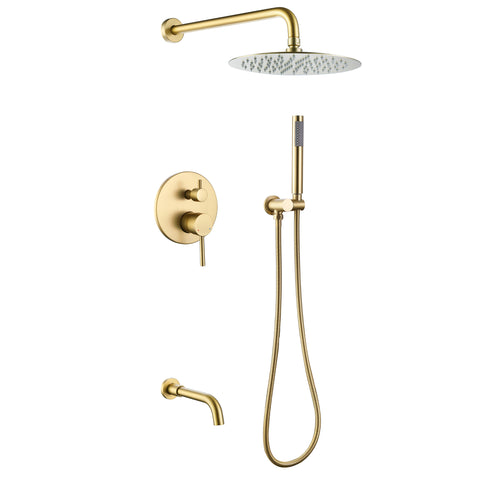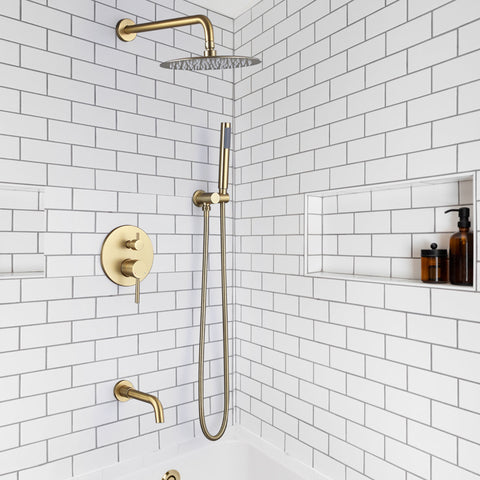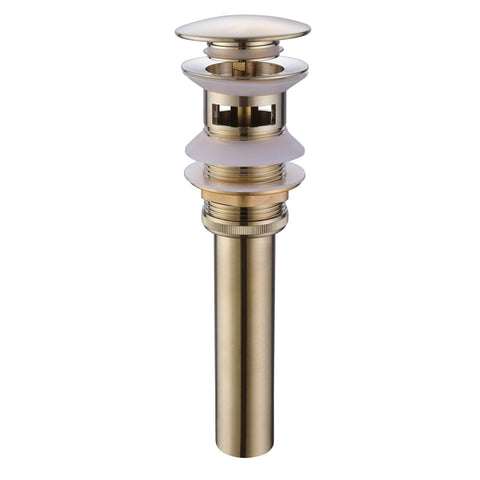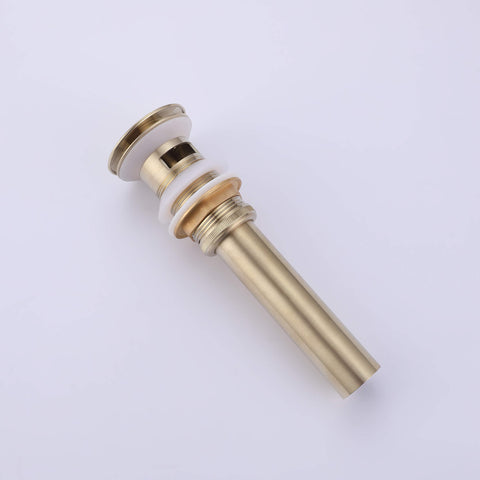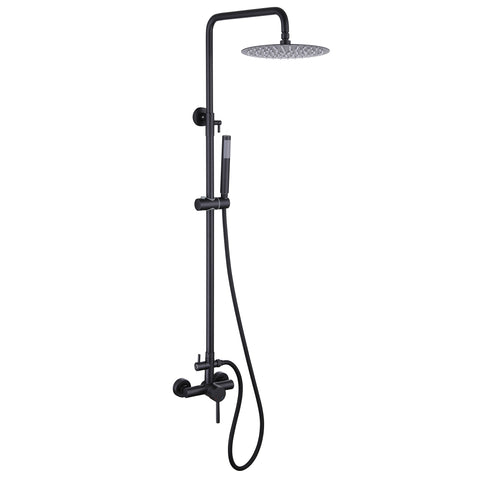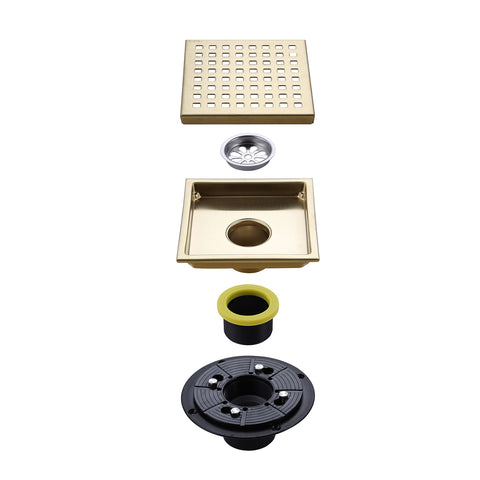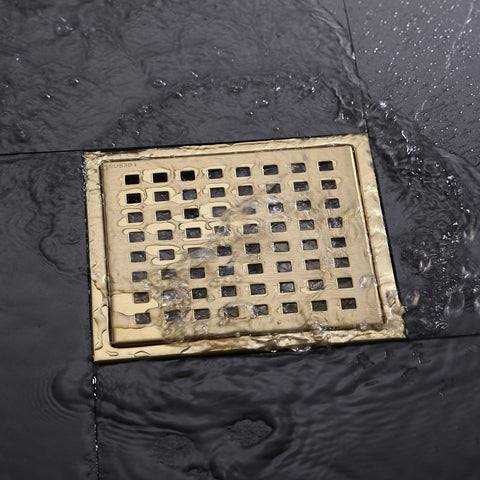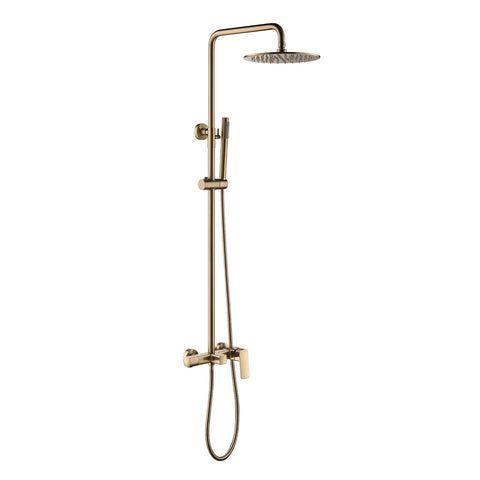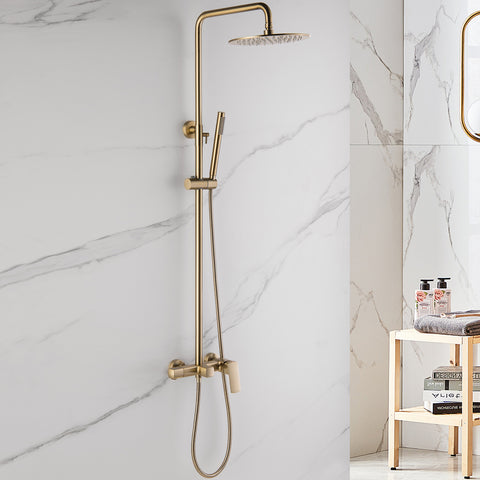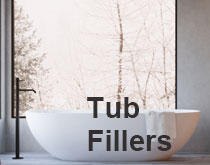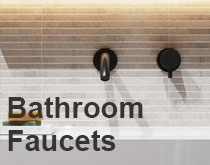A Step-by-Step Guide on How to Unclog Your Shower Head
 Is your shower head not giving you the powerful water flow you desire? Don't worry! In this step-by-step guide, we will show you how to unclog your shower head and unlock its full potential. Whether it's due to mineral buildup, sediment, or other debris, a clogged shower head can impact your bathing experience. But with our easy-to-follow instructions, you can restore your shower head to its former glory and enjoy the invigorating water pressure you crave.
Is your shower head not giving you the powerful water flow you desire? Don't worry! In this step-by-step guide, we will show you how to unclog your shower head and unlock its full potential. Whether it's due to mineral buildup, sediment, or other debris, a clogged shower head can impact your bathing experience. But with our easy-to-follow instructions, you can restore your shower head to its former glory and enjoy the invigorating water pressure you crave.
Using simple household items and a bit of elbow grease, you'll learn how to effectively remove the blockages and improve the water flow in your shower. No need to call a plumber or spend a fortune on expensive products – our guide will teach you affordable and DIY techniques that anyone can master.
Say goodbye to weak water pressure and hello to a revitalizing shower experience. Get ready to unleash the power of your shower head by following our straightforward, step-by-step instructions. Let's dive in and unclog that shower head now!
Signs that your shower head is clogged
A clogged shower head can manifest in various ways. Here are some common signs that indicate your shower head may need unclogging:
- Weak water pressure: If you notice a significant decrease in water pressure while taking a shower, it could be a sign that your shower head is clogged. The blockage restricts the flow of water, resulting in a weak and unsatisfying shower experience.
- Uneven spray pattern: A clogged shower head may produce an uneven spray pattern, with water shooting out in different directions. This inconsistency can make it difficult to rinse off soap and shampoo effectively.
- Sputtering or pulsating water: When a shower head is clogged, water may sputter or pulsate instead of flowing smoothly. This can be frustrating and disrupt the relaxing nature of a shower.
If you have experienced any of these symptoms, it's time to take action and unclog your shower head.
Understanding the causes of shower head clogging
Before we delve into the unclogging process, it's essential to understand what causes shower heads to clog in the first place. By identifying the underlying reasons, you can take preventive measures to avoid future blockages. Here are the common causes of shower head clogging:
- Mineral buildup: Hard water contains minerals like calcium and magnesium. Over time, these minerals can accumulate inside the small openings of your shower head, causing blockages and reducing water flow.
- Sediment: Sediment, such as dirt particles and sand, can enter your water supply and get trapped in your shower head. This can lead to clogs and affect the performance of your shower.
- Soap scum and residue: Soap scum can build up on the surface of your shower head, eventually blocking the flow of water. Additionally, residue from shampoos, conditioners, and other hair products can contribute to clogging.
By addressing these causes, you can prevent future clogs and ensure your shower head remains in optimal condition.
Tools and materials needed for unclogging a shower head
Before you begin the unclogging process, it's important to gather the necessary tools and materials. Fortunately, most of these items can be found in your home. Here's what you'll need:
- Adjustable wrench: This will be used to remove the shower head from the pipe. Ensure you have the correct size wrench for your shower head.
- Plastic bag or container: To catch any debris or water that may come out during the unclogging process, it's helpful to have a plastic bag or container ready.
- White vinegar: Vinegar is a natural cleaning agent that can effectively dissolve mineral buildup and remove soap scum. Make sure you have enough white vinegar to fully submerge your shower head.
- Toothbrush or small brush: A toothbrush or small brush will be used to scrub away stubborn buildup and residue.
- Toothpick or safety pin: These small tools can be handy for poking and clearing out any debris stuck in the shower head's nozzles.
Now that you have all the necessary tools and materials, let's move on to the step-by-step guide on how to unclog your shower head.
Step-by-step guide on how to unclog your shower head
-
Step 1: Prepare the shower head for cleaning
- Start by turning off the water supply to the shower. You can do this by shutting off the main water valve or turning off the water supply to the specific shower.
- Using an adjustable wrench, carefully loosen and remove the shower head from the pipe. Wrap a cloth around the shower head to prevent any damage while gripping it with the wrench.
- Place the shower head in a plastic bag or container to catch any debris or water that may come out during the cleaning process. This will help contain the mess and make cleanup easier.
-
Step 2: Soak the shower head in vinegar
- Fill a container or basin with enough white vinegar to fully submerge the shower head. Vinegar is a natural cleaning agent that will help dissolve mineral buildup and remove other clogging agents.
- Immerse the shower head in the vinegar and let it soak for at least 1 to 2 hours. This will give the vinegar enough time to break down the blockages.
- If the shower head cannot be fully submerged, you can use a plastic bag filled with vinegar and secure it around the shower head using a rubber band. Make sure the vinegar covers the affected areas.
-
Step 3: Scrub away the buildup
-After soaking, remove the shower head from the vinegar and inspect it for any remaining debris or buildup.
- Using a toothbrush or small brush, scrub away any stubborn residue. Pay special attention to the nozzles and openings of the shower head.
- For hard-to-reach areas, you can use a toothpick or safety pin to gently poke and clear out any remaining clogs.
-
Step 4: Reassemble and test
- Once you are satisfied with the cleanliness of the shower head, rinse it thoroughly with water to remove any vinegar or loosened debris.
- Reattach the shower head to the pipe using an adjustable wrench. Make sure it is firmly secured but avoid overtightening to prevent any damage.
- Turn on the water supply and test the water flow. You should notice a significant improvement in the water pressure and overall performance of the shower head.
Congratulations! You have successfully unclogged your shower head and restored its full potential. Enjoy the invigorating shower experience that awaits you.
Alternative methods for unclogging a shower head
While the vinegar soak method is highly effective for unclogging shower heads, there are alternative methods you can try if you prefer different approaches. Here are a few additional techniques:
- Baking soda and vinegar: Create a paste by mixing baking soda and vinegar. Apply the paste to the shower head, focusing on the areas with buildup. Let it sit for a few minutes before scrubbing and rinsing.
- Citric acid: If you can't find white vinegar, citric acid can be used as an alternative. Dissolve a few tablespoons of citric acid in warm water and follow the same soaking and cleaning process as with vinegar.
- Pipe cleaner or wire brush: For stubborn clogs, a pipe cleaner or wire brush can be used to physically dislodge the blockages. Carefully insert the wire into the shower head's openings and move it back and forth to loosen the debris.
Remember to exercise caution when using alternative methods and always refer to the manufacturer's instructions for your specific shower head.
Preventive measures to avoid shower head clogging
Now that you have successfully unclogged your shower head, it's important to take preventive measures to avoid future blockages. Here are some tips to keep your shower head clean and efficient:
- Regular cleaning: Make it a habit to clean your shower head at least once a month to prevent the buildup of minerals and other clogging agents. Use the vinegar soak method or any other cleaning technique that works for you.
- Use a shower head filter: Installing a shower head filter can help reduce the amount of sediment and minerals that enter your shower head. This can significantly prolong the time between cleanings and maintain optimal water flow.
- Clean the shower head nozzle: Periodically remove and clean the nozzle of your shower head. This will prevent any residue or debris from accumulating and obstructing the water flow.
By incorporating these preventive measures into your regular shower maintenance routine, you can keep your shower head in top shape and avoid future clogs.
Conclusion and final tips for maintaining a clean and efficient shower head
Congratulations on successfully unclogging your shower head and restoring its water flow! By following our step-by-step guide and implementing preventive measures, you can enjoy a revitalizing shower experience every time. Here are some final tips to maintain a clean and efficient shower head:
- Regularly clean your shower head to prevent mineral buildup and clogging.
- Consider using a shower head filter to reduce sediment and prolong the time between cleanings.
- Inspect and clean the nozzle of your shower head periodically to ensure optimal water flow.
- If you encounter persistent clogs or issues with water pressure, consult a professional plumber for further assistance.
Now that you have the knowledge and tools to unclog your shower head, say goodbye to weak water pressure and hello to a powerful and refreshing shower experience. Enjoy the invigorating flow of water and unlock the true potential of your shower head.
